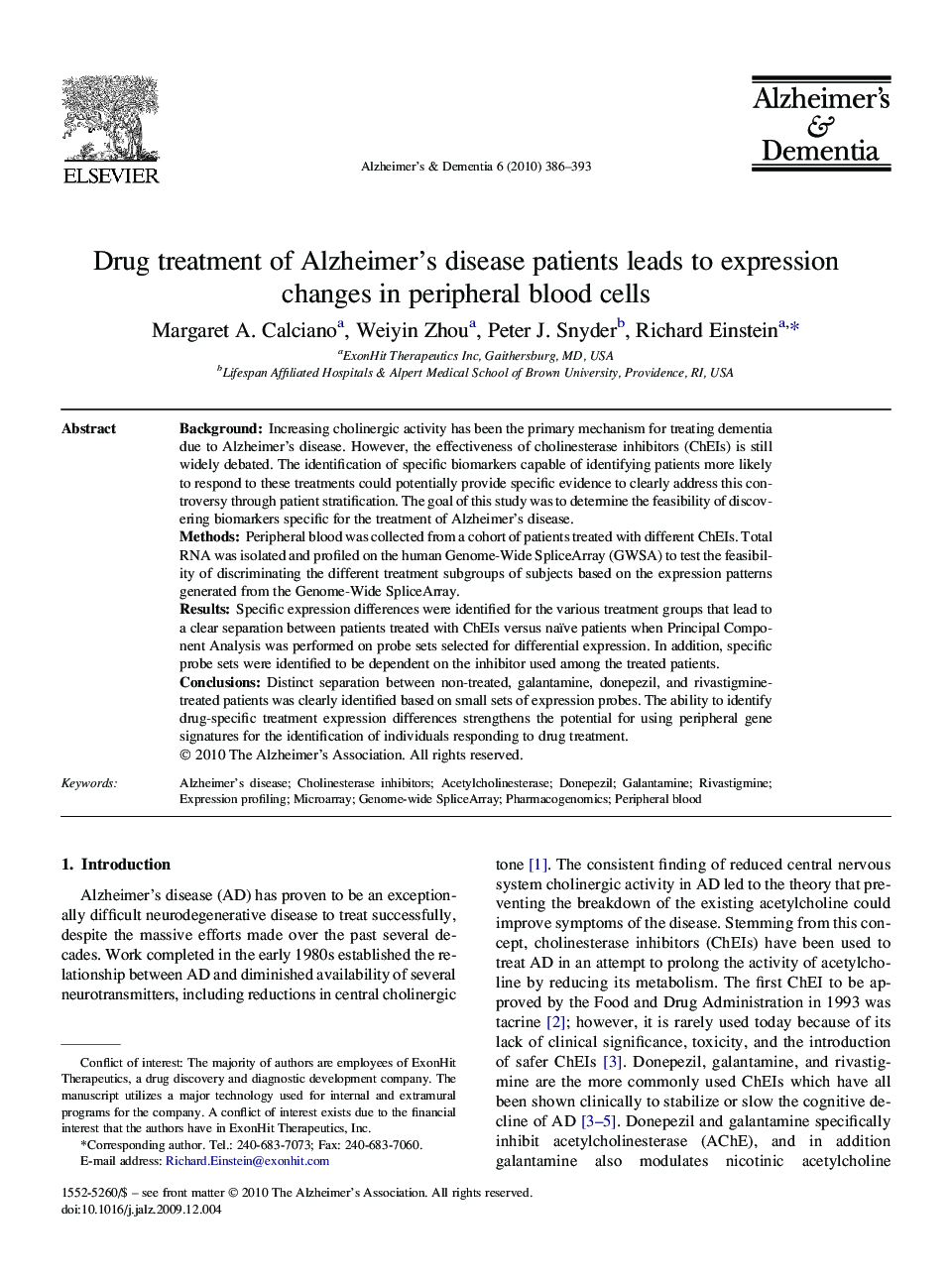| Article ID | Journal | Published Year | Pages | File Type |
|---|---|---|---|---|
| 5625001 | Alzheimer's & Dementia | 2010 | 8 Pages |
BackgroundIncreasing cholinergic activity has been the primary mechanism for treating dementia due to Alzheimer's disease. However, the effectiveness of cholinesterase inhibitors (ChEIs) is still widely debated. The identification of specific biomarkers capable of identifying patients more likely to respond to these treatments could potentially provide specific evidence to clearly address this controversy through patient stratification. The goal of this study was to determine the feasibility of discovering biomarkers specific for the treatment of Alzheimer's disease.MethodsPeripheral blood was collected from a cohort of patients treated with different ChEIs. Total RNA was isolated and profiled on the human Genome-Wide SpliceArray (GWSA) to test the feasibility of discriminating the different treatment subgroups of subjects based on the expression patterns generated from the Genome-Wide SpliceArray.ResultsSpecific expression differences were identified for the various treatment groups that lead to a clear separation between patients treated with ChEIs versus naïve patients when Principal Component Analysis was performed on probe sets selected for differential expression. In addition, specific probe sets were identified to be dependent on the inhibitor used among the treated patients.ConclusionsDistinct separation between non-treated, galantamine, donepezil, and rivastigmine-treated patients was clearly identified based on small sets of expression probes. The ability to identify drug-specific treatment expression differences strengthens the potential for using peripheral gene signatures for the identification of individuals responding to drug treatment.
